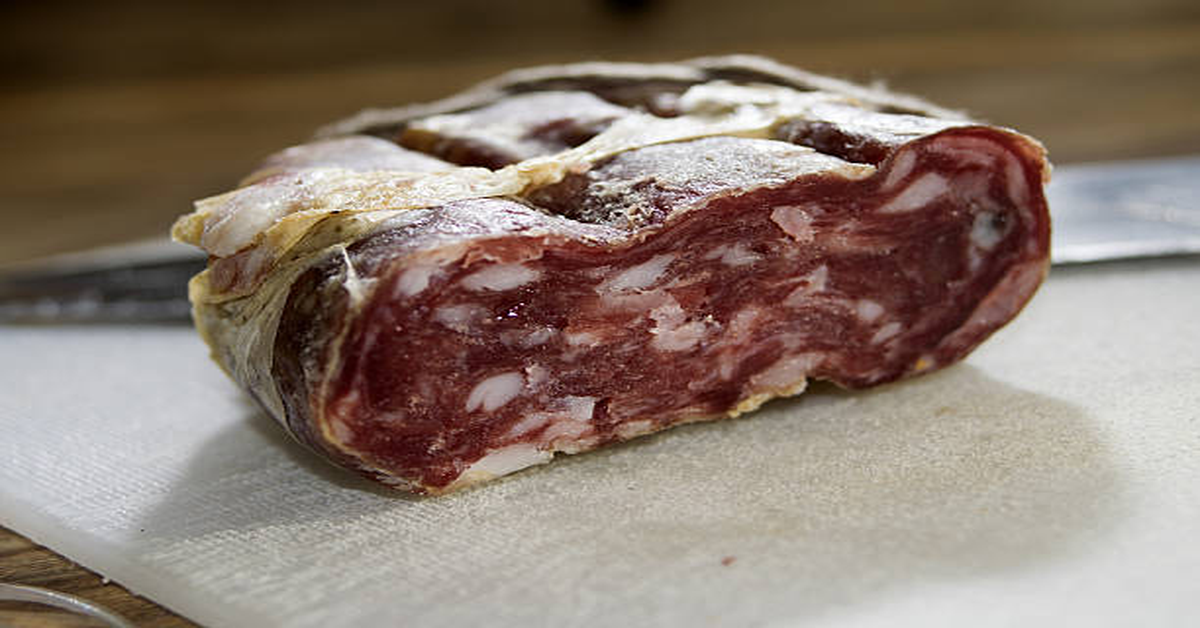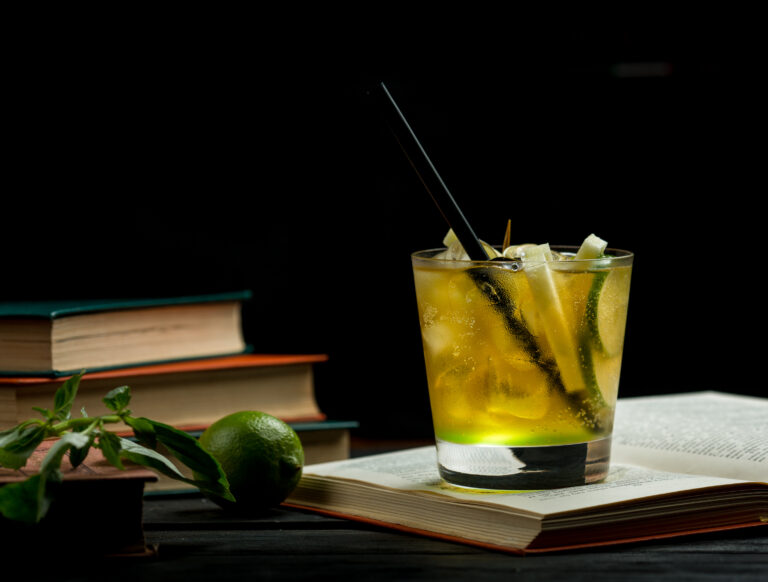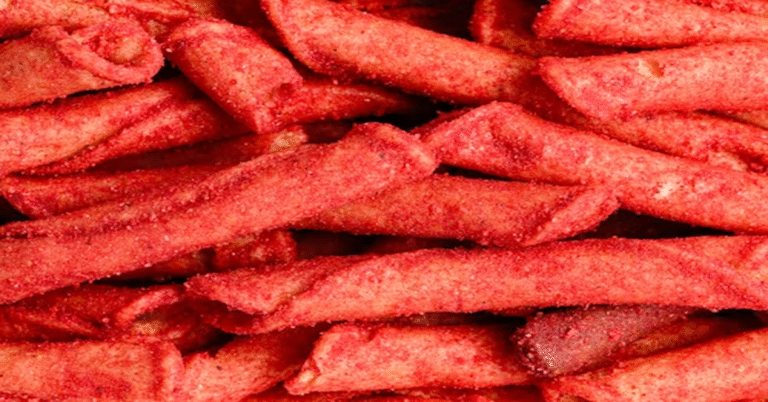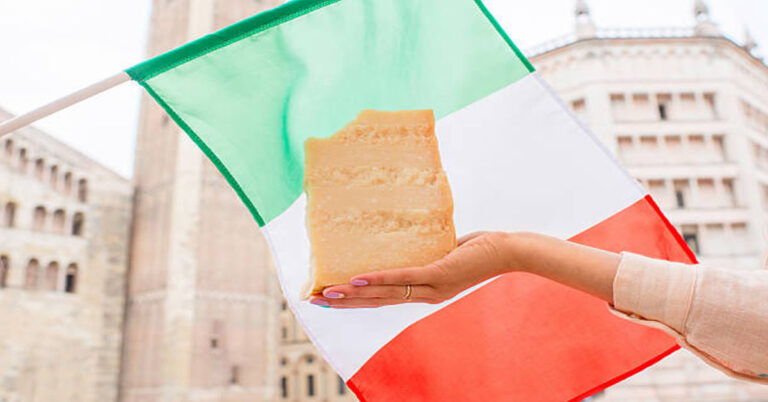Soppressata: The Complete Guide to Italy’s Beloved Cured Meat
Among the many traditional foods that define Italy’s culinary heritage, Soppressata stands as one of the most flavorful, respected, and culturally rich types of cured meat. Often found on rustic wooden boards surrounded by cheeses, olives, and bread, Soppressata is more than just salami — it’s a symbol of craftsmanship, patience, and regional pride.
Every slice of Soppressata tells a story of tradition, passed down through generations of artisans who preserved their meat not just for sustenance but as an expression of identity and community. Today, Soppressata is enjoyed worldwide, from gourmet markets to homemade charcuterie platters, maintaining its authentic taste while adapting to modern preferences.
This article explores the world of Soppressata in depth — its origin, varieties, production process, nutritional profile, culinary uses, and cultural significance. Whether you’re a food enthusiast, chef, or simply curious about fine meats, understanding Soppressata will help you appreciate its unique blend of flavor, history, and artistry.
1. The Origin and History of Soppressata
Soppressata’s roots trace back centuries to the southern regions of Italy — particularly Calabria, Basilicata, Puglia, and Campania — where families developed their own recipes to preserve pork through the winter months. In rural communities, meat preservation wasn’t just about taste; it was a necessity. Before refrigeration existed, curing and drying were essential techniques to ensure food longevity.
The term “Soppressata” comes from the Italian word soppressare, meaning “to press.” Traditionally, after the meat mixture was stuffed into natural casings, it was gently pressed between wooden boards or weights to remove air pockets and excess moisture. This pressing process gave the sausage its signature flattened shape, distinguishing it from the rounder, more cylindrical salamis found elsewhere.
Historically, every part of the pig was used to avoid waste. Families would slaughter a pig once a year and dedicate specific cuts for Soppressata — usually the choicest portions of lean pork from the shoulder or ham, blended with carefully chosen fat to achieve balance in texture and flavor. Over time, these home recipes evolved into regional specialties, some spicy and smoky, others delicate and sweet.
Today, Soppressata remains deeply tied to Italian heritage. The European Union recognizes certain types, like Soppressata di Calabria, as PDO (Protected Designation of Origin) products, ensuring they are produced using traditional methods and within their native territories.
2. Varieties of Soppressata
Soppressata is not a single standardized product; it varies significantly based on region, ingredients, and curing technique. Each area in Italy — and even beyond — has its interpretation, giving rise to distinct flavors and textures.
| Region | Distinctive Features | Flavor Profile | Common Additions |
|---|---|---|---|
| Calabria | Pressed, spicy, made with chili peppers | Bold, hot, smoky | Red pepper flakes, wine, garlic |
| Basilicata | Traditional hand-cut meat | Rich and dense | Peppercorns, mild spice |
| Apulia (Puglia) | Less spicy, leaner cuts | Mild, savory | White wine, black pepper |
| Tuscany | Coarsely ground, often not pressed | Earthy and aromatic | Garlic, fennel seeds |
| Veneto | Softer texture, semi-cured | Delicate, subtle | Sweet spices, nutmeg |
| American Soppressata | Adapted for modern tastes | Balanced, sometimes smoky | Varied seasonings, mild heat |
The most famous is Soppressata di Calabria, known for its fiery taste, vibrant red color, and intense aroma. It embodies southern Italy’s love for robust, rustic flavors, often aged to perfection in mountain cellars with natural air circulation.
3. The Ingredients and Composition
The beauty of Soppressata lies in its simplicity — it uses few but high-quality ingredients. Authentic versions rely on traditional methods, emphasizing natural balance rather than artificial enhancement.
Core Ingredients of Soppressata
| Ingredient | Purpose / Role |
|---|---|
| Pork Meat (Lean Cuts) | Provides body, flavor, and protein content |
| Pork Fat | Adds moisture, softness, and richness |
| Salt | Preserves the meat and enhances flavor |
| Black or Red Pepper | Adds spiciness and complexity |
| Garlic (optional) | Infuses aroma and depth |
| Wine (White or Red) | Aids fermentation and adds flavor |
| Natural Casings | Protects meat and allows aging |
| Starter Cultures (modern use) | Ensures safe and consistent curing |
Traditional Soppressata uses no preservatives beyond salt and spices, relying on air, time, and technique. Modern commercial versions may include nitrates or nitrites to control bacteria growth and maintain color, but artisanal producers often avoid them to keep the flavor authentic.
4. The Production Process: Craftsmanship in Motion
Making Soppressata is an art form that blends science, intuition, and experience. The process involves several carefully monitored stages, each contributing to the final flavor and safety of the product.
Step-by-Step Process
| Stage | Description |
|---|---|
| 1. Meat Selection and Preparation | High-quality pork shoulder or ham is trimmed and minced coarsely to preserve texture. |
| 2. Mixing and Seasoning | Salt, pepper, spices, and wine are blended evenly into the meat mixture. |
| 3. Stuffing into Casings | The mixture is packed tightly into natural casings, ensuring no air pockets remain. |
| 4. Pressing (Soppressare) | Sausages are pressed between wooden boards for 1–2 days to achieve their flat shape. |
| 5. Fermentation | The sausages rest in controlled humidity and temperature to develop flavor and acidity. |
| 6. Drying and Aging | Hanging in ventilated rooms for weeks or months allows the flavor to mature. |
| 7. Final Storage | Aged Soppressata is stored in cool, dry spaces or preserved in oil or wax. |
The drying process is critical. It determines texture, aroma, and safety. Experienced producers adjust conditions depending on the season — using warmer temperatures for initial fermentation and cooler air for long-term curing. Aging can last anywhere from 30 days to over 120 days, depending on the region and desired firmness.
5. Texture, Flavor, and Appearance
Soppressata’s sensory appeal lies in its contrasting yet harmonious characteristics. Visually, it has a flattened, oval shape with visible specks of white fat against a deep red meat backdrop. The aroma is intense — a mix of aged meat, spice, and subtle fermentation.
When sliced, the texture is firm but tender, offering a satisfying bite. The taste can vary from mildly savory to powerfully spicy, depending on the seasoning. Calabrian Soppressata, for instance, delivers a sharp, peppery kick balanced by the mellow richness of pork fat. In contrast, northern varieties tend to be gentler, focusing on meat purity and herbal undertones.
A well-made Soppressata melts slightly on the palate, releasing complex layers of flavor that evolve with every chew — from salt and spice to umami and subtle sweetness.
6. Nutritional Composition of Soppressata
Soppressata is a nutrient-dense food, rich in protein, fats, and essential minerals. Like other cured meats, it’s best enjoyed in moderation as part of a balanced diet.
Average Nutritional Values (per 100g)
| Nutrient | Amount | Health Role |
|---|---|---|
| Calories | 340–400 kcal | Provides energy |
| Protein | 25–30 g | Builds and repairs muscle |
| Total Fat | 30–35 g | Source of essential fatty acids |
| Saturated Fat | 10–12 g | Should be limited in excess |
| Carbohydrates | 0–2 g | Minimal; low-carb food |
| Sodium | 1200–1600 mg | Preservative and flavor agent |
| Iron | 1.5–2 mg | Supports red blood cell production |
| Zinc | 3–4 mg | Aids immune system and metabolism |
While high in sodium and fat, Soppressata offers valuable nutrients and a satisfying source of protein when eaten thoughtfully. Pairing it with vegetables, fruits, and whole grains can balance its richness and nutritional profile.
7. Health Benefits and Considerations
When consumed in moderation, Soppressata provides several health benefits:
- High Protein Source: The lean cuts of pork deliver essential amino acids necessary for muscle growth and repair.
- Rich in Iron and Zinc: Important for oxygen transport and immune health.
- Low in Carbohydrates: Ideal for low-carb or ketogenic diets.
- Contains Natural Probiotics: Fermented varieties may contain beneficial bacteria that aid digestion.
However, excessive intake of cured meats can raise sodium and saturated fat levels, potentially increasing risks of hypertension or heart disease. Choosing artisanal Soppressata made with minimal additives and pairing it with fiber-rich foods helps mitigate these effects.
8. Culinary Uses and Pairings
Soppressata is versatile and can elevate both simple and elaborate dishes. It’s commonly featured on antipasto platters, but creative cooks incorporate it into many recipes.
Popular Ways to Serve Soppressata
- Charcuterie Boards: Pair with cheeses like Parmigiano-Reggiano, provolone, or mozzarella, alongside olives, nuts, and fruit.
- Sandwiches & Panini: Layer Soppressata with arugula, sun-dried tomatoes, and aged cheese on rustic bread.
- Pasta Dishes: Dice and sauté it into carbonara, penne arrabbiata, or creamy sauces for added depth.
- Pizza Topping: Adds a spicy, savory kick when paired with mozzarella and tomato sauce.
- Omelets and Frittatas: A few slices infuse breakfast dishes with bold flavor.
- Wine Pairings: Soppressata pairs beautifully with medium-bodied red wines such as Chianti, Nero d’Avola, or Montepulciano.
The contrast of its salty, spicy flavor against the sweetness of fruits or mild cheeses creates harmony on the palate, making it a centerpiece of Mediterranean dining.
9. Storage and Preservation
Proper storage preserves flavor and prevents spoilage. Whole Soppressata should be hung or kept in a cool, dry place at around 15°C (59°F) with low humidity. Once sliced, it must be wrapped tightly in parchment or vacuum-sealed and stored in the refrigerator.
For longer preservation, traditional methods include submerging slices in olive oil or coating the exterior with wax to block air exposure.
If stored correctly, Soppressata can last several months, improving in flavor as it continues to age.
10. Cultural Importance in Italy
Soppressata is more than food — it’s a symbol of rural tradition and family unity. In many Italian villages, especially in Calabria and Basilicata, preparing Soppressata is a communal ritual that marks the winter season. Families gather to butcher the pig, prepare spices, stuff casings, and hang the sausages to dry in attics or cellars.
This process, often called la maialata, celebrates self-sufficiency and community spirit. Homemade Soppressata is cherished as a family heirloom recipe, and many Italians still gift it during holidays as a token of respect and affection.
Even today, small-scale producers keep this spirit alive by maintaining age-old techniques, using local ingredients, and curing their meats naturally. For Italians, Soppressata embodies their deep connection to food, family, and land.
11. Comparing Soppressata with Other Cured Meats
| Characteristic | Soppressata | Salami | Capicola (Coppa) | Pepperoni |
|---|---|---|---|---|
| Shape | Flat, oval | Cylindrical | Rolled muscle cut | Cylindrical |
| Texture | Coarse and firm | Fine to medium grind | Tender, whole muscle | Soft, finely ground |
| Spice Level | Mild to very spicy | Mild to moderate | Mild | Spicy, smoky |
| Fat Ratio | Moderate | Higher | Lower | High |
| Usage | Antipasto, sandwiches, boards | General cured meat | Sliced cold cut | Pizza, sandwiches |
Soppressata’s distinguishing feature is its pressed form and rustic texture, setting it apart from smoother salamis or softer cold cuts.
12. Global Adaptations and Modern Trends
With Italian immigrants spreading culinary traditions worldwide, Soppressata gained popularity in North America, where it evolved into both spicy and sweet versions. American producers often use slightly different pork cuts or seasoning blends but maintain the essence of the original.
Modern consumers seek healthier and more sustainable foods, leading to innovations like organic Soppressata, low-sodium versions, and even plant-based alternatives made from mushrooms or legumes. While these differ in flavor, they reflect a growing respect for tradition balanced with modern wellness priorities.
13. How to Identify Authentic Soppressata
When purchasing Soppressata, authenticity matters. Here’s what to look for:
| Indicator | Description |
|---|---|
| Label or PDO Mark | Genuine Calabrian Soppressata bears PDO certification. |
| Color | Deep red with visible white fat marbling. |
| Shape | Slightly flattened, not round. |
| Aroma | Natural, meaty, with hints of spice and fermentation. |
| Texture | Firm yet pliable when pressed. |
| Ingredients | Should list simple, natural items (pork, salt, pepper, wine). |
Avoid overly bright or uniform colors, which can indicate artificial additives or industrial processing.
14. How to Make Soppressata at Home (Traditional Overview)
Homemade Soppressata requires patience and attention to hygiene. A simplified traditional method includes:
- Select fresh pork shoulder — trim excess fat and grind coarsely.
- Season with salt, pepper, chili flakes, and garlic — add wine for flavor and mild fermentation.
- Stuff into natural casings using a sausage stuffer.
- Press gently between wooden boards for a day or two to achieve the flat shape.
- Hang in a cool, ventilated space (around 15°C, 70% humidity).
- Dry and age for 6–8 weeks or longer until firm and aromatic.
Patience is key. The slow curing process develops complex flavors and ensures safety through natural dehydration.
15. The Timeless Appeal of Soppressata
What makes Soppressata endure for centuries is its balance between simplicity and sophistication. It transforms basic ingredients — pork, salt, spice, and time — into a delicacy cherished by cultures and generations. It represents human ingenuity: the ability to turn necessity into art, and preservation into pleasure.
Whether enjoyed as part of a festive meal or a quiet snack, Soppressata connects people to their heritage, reminding us that good food is not just eaten but experienced — through memory, tradition, and craftsmanship.
Conclusion
Soppressata embodies everything beautiful about Italian gastronomy — authenticity, craftsmanship, and passion. From its humble origins in rural villages to its presence on international charcuterie boards, it remains a culinary treasure that bridges past and present.
Each slice is a reminder that food, at its best, tells a story — of families, traditions, and the timeless art of savoring life through flavor.
Frequently Asked Questions (FAQs)
1. What exactly is Soppressata?
Soppressata is a traditional Italian cured pork sausage, typically pressed into a flattened shape and seasoned with salt, pepper, and sometimes chili. It’s air-dried and aged for weeks to develop its signature flavor, texture, and aroma. Depending on the region, it can be spicy, mild, or aromatic.
2. Is Soppressata the same as salami?
While similar, Soppressata differs from typical salami in shape, grind size, and preparation. It’s flatter, coarser, and often spicier. The pressing process and regional spice blends give it a unique texture and taste that distinguish it from other Italian cured meats.
3. How should Soppressata be stored?
Whole Soppressata should be hung or kept in a cool, dry environment. Once sliced, it should be wrapped in parchment or vacuum-sealed and refrigerated. Properly stored, it can last several months, and its flavor may even improve with age.
4. Can Soppressata be eaten raw?
Yes, Soppressata is a dry-cured product, meaning it’s safe to eat without further cooking. The curing and aging processes remove moisture and prevent bacterial growth, making it shelf-stable and ready to eat.
5. What pairs best with Soppressata?
Soppressata pairs wonderfully with aged cheeses, crusty bread, olives, and robust red wines like Chianti or Montepulciano. For a balanced meal, serve it with fresh vegetables or fruits such as figs, grapes, or melon to offset its rich, salty flavor.







